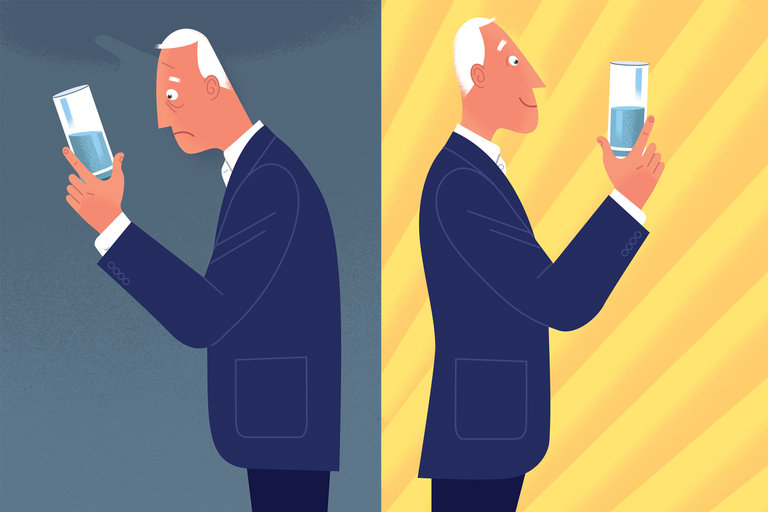
Turning Negative Thinkers Into Positive Ones
Turning Negative Thinkers Into Positive Ones
April 3, 2017
Most mornings as I leave the Y after my swim and shower, I cross paths with a coterie of toddlers entering with their caregivers for a kid-oriented activity. I can’t resist saying hello, requesting a high-five, and wishing them a fun time. I leave the Y grinning from ear to ear, uplifted not just by my own workout but even more so by my interaction with these darling representatives of the next generation.
What a great way to start the day!
When I told a fellow swimmer about this experience and mentioned that I was writing a column on the health benefits of positive emotions, she asked, “What do you do about people who are always negative?” She was referring to her parents, whose chronic negativity seems to drag everyone down and make family visits extremely unpleasant.
I lived for half a century with a man who suffered from periodic bouts of depression, so I understand how challenging negativism can be. I wish I had known years ago about the work Barbara Fredrickson, a psychologist at the University of North Carolina, has done on fostering positive emotions, in particular her theory that accumulating “micro-moments of positivity,” like my daily interaction with children, can, over time, result in greater overall well-being.
The research that Dr. Fredrickson and others have done demonstrates that the extent to which we can generate positive emotions from even everyday activities can determine who flourishes and who doesn’t. More than a sudden bonanza of good fortune, repeated brief moments of positive feelings can provide a buffer against stress and depression and foster both physical and mental health, their studies show.
This is not to say that one must always be positive to be healthy and happy. Clearly, there are times and situations that naturally result in negative feelings in the most upbeat of individuals. Worry, sadness, anger and other such “downers” have their place in any normal life. But chronically viewing the glass as half-empty is detrimental both mentally and physically and inhibits one’s ability to bounce back from life’s inevitable stresses.
Negative feelings activate a region of the brain called the amygdala, which is involved in processing fear and anxiety and other emotions. Dr. Richard J. Davidson, a neuroscientist and founder of the Center for Healthy Minds at the University of Wisconsin — Madison, has shown that people in whom the amygdala recovers slowly from a threat are at greater risk for a variety of health problems than those in whom it recovers quickly.
Both he and Dr. Fredrickson and their colleagues have demonstrated that the brain is “plastic,” or capable of generating new cells and pathways, and it is possible to train the circuitry in the brain to promote more positive responses. That is, a person can learn to be more positiveby practicing certain skills that foster positivity.
For example, Dr. Fredrickson’s team found that six weeks of training in a form of meditation focused on compassion and kindness resulted in an increase in positive emotions and social connectedness and improved function of one of the main nerves that helps to control heart rate. The result is a more variable heart rate that, she said in an interview, is associated with objective health benefits like better control of blood glucose, less inflammation and faster recovery from a heart attack.
Dr. Davidson’s team showed that as little as two weeks’ training in compassion and kindness meditation generated changes in brain circuitry linked to an increase in positive social behaviors like generosity.
“The results suggest that taking time to learn the skills to self-generate positive emotions can help us become healthier, more social, more resilient versions of ourselves,” Dr. Fredrickson reported in the National Institutes of Health monthly newsletter in 2015.
In other words, Dr. Davidson said, “well-being can be considered a life skill. If you practice, you can actually get better at it.” By learning and regularly practicing skills that promote positive emotions, you can become a happier and healthier person. Thus, there is hope for people like my friend’s parents should they choose to take steps to develop and reinforce positivity.
In her newest book, “Love 2.0,” Dr. Fredrickson reports that “shared positivity — having two people caught up in the same emotion — may have even a greater impact on health than something positive experienced by oneself.” Consider watching a funny play or movie or TV show with a friend of similar tastes, or sharing good news, a joke or amusing incidents with others. Dr. Fredrickson also teaches “loving-kindness meditation” focused on directing good-hearted wishes to others. This can result in people “feeling more in tune with other people at the end of the day,” she said.
Activities Dr. Fredrickson and others endorse to foster positive emotions include:
Do good things for other people. In addition to making others happier, this enhances your own positive feelings. It can be something as simple as helping someone carry heavy packages or providing directions for a stranger.
Appreciate the world around you. It could be a bird, a tree, a beautiful sunrise or sunset or even an article of clothing someone is wearing. I met a man recently who was reveling in the architectural details of the 19th-century houses in my neighborhood.
Develop and bolster relationships. Building strong social connections with friends or family members enhances feelings of self-worth and, long-term studies have shown, is associated with better health and a longer life.
Establish goals that can be accomplished. Perhaps you want to improve your tennis or read more books. But be realistic; a goal that is impractical or too challenging can create unnecessary stress.
Learn something new. It can be a sport, a language, an instrument or a game that instills a sense of achievement, self-confidence and resilience. But here, too, be realistic about how long this may take and be sure you have the time needed.
Choose to accept yourself, flaws and all. Rather than imperfections and failures, focus on your positive attributes and achievements. The loveliest people I know have none of the external features of loveliness but shine with the internal beauty of caring, compassion and consideration of others.
Practice resilience. Rather than let loss, stress, failure or trauma overwhelm you, use them as learning experiences and steppingstones to a better future. Remember the expression: When life hands you a lemon, make lemonade.
Practice mindfulness. Ruminating on past problems or future difficulties drains mental resources and steals attention from current pleasures. Let go of things you can’t control and focus on the here-and-now. Consider taking a course in insight meditation.
Article Source: https://www.nytimes.com/2017/04/03/well/live/turning-negative-thinkers-into-positive-ones.html?mwrsm=Email


Sorry, the comment form is closed at this time.